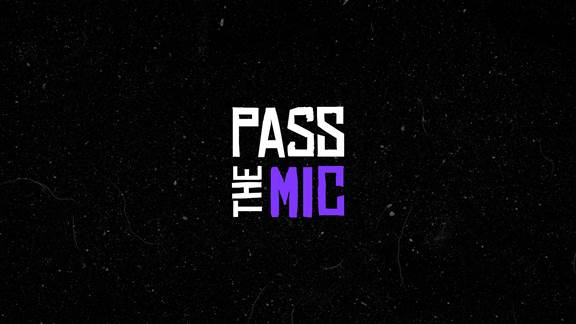We #PasstheMic to those with enriching perspectives to share their views and goals. Today, on International Women's Day, one of our colleagues in the design team shares her lived experiences and learnings with us around why it’s important to Choose to Challenge gender inequality.

Pass the Mic
At the start
Throughout my early career, I often heard of women talking about the gender inequality they had experienced in the workplace. Although their stories of inequality infuriated me and I could empathise with them, it was hard for me to really relate as I never felt like I had experienced any forms of such inequality in the workplace. This was up until I started a new job, the experience there changed my perspective on workplace inequality and meant that going forward, when interviewing for companies such as Kin + Carta, a clear D&I strategy was essential.
Red flags
My initial first impressions when joining was shock from the lack of women working there. Although it was a small company, I was amongst two other women in the business. Initially, I didn’t feel at a disadvantage, I just naively presumed that it had just kind of happened.
A couple of weeks into my role there, we had an inbound request for pitch from a prospect client. Ready and raring to go, I was really excited when a colleague told me I would be working on the pitch. I was eager to use it as an opportunity to show them what I could really do. I can remember him sitting me down before the pitch like it was yesterday, telling me “So we’ve decided you were a good candidate to work on this proposal as you’re a woman”.
Diversity without inclusivity
His tone, his posture and everything about his body language was signalling that this was meant to be good news to me, like I should be happy that I had been put on a project not for my skill set or talent, but rather for my gender. Probing into what he said to ensure I had heard correctly, he goes on to confirm that they need a woman on the pitch team to show off to the client that we have gender diversity in the company.
At that moment, I was so shocked, left completely speechless, which for me says a lot. All I felt in that moment was shame. I was being used, being flaunted in front of a client like some kind of trophy. This was the first of many moments working there where my confidence in my skills and my value as a professional and as a woman was slowly chipped away. And this was the point when I remembered all those stories I’d heard from colleagues and friends. I could now truly understand the emotions they must have gone through. This made me realise that while a lot of businesses have policies and talk about their commitment to diversity and inclusion, it is important to ensure it is actually embedded in their practices and the way they treat their employees. Putting them forward for things to highlight diversity is not that and definitely didn’t make me feel like I belonged there.
In hindsight
Looking back now, I wish I had been more vocal about how I felt. It is a regret of mine, but my lack of confidence meant I did not have the courage to speak up. What I learned from this experience was to never shy away from voicing your emotions in situations like this, even and especially in a professional environment. If something similar were ever to happen again, I know how important it is to not only call out the unacceptable nature of the situation as soon as it arises to both the individuals and superiors, but also to highlight the impact this can have on someone’s confidence and self-worth.
An open forum
That is why coming to a place like K+C makes me proud. Not because we are perfect in everything D&I, because let’s be honest no business is. But because it has created an environment that actively encourages speaking up and giving feedback. It makes having those difficult conversations a lot easier. It also means there is space for things to change to ensure everyone feels included and valued for who they are and what they bring to the company.